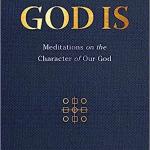The Cross Before Constantine: The Early Life of a Christian Symbol
Minneapolis: Fortress, 2015.
Available at Amazon.com
Easily the best book so far for 2016 is Bruce Longenecker’s small paper back on the cross before Constantine. Whereas a branch of scholarship has argued that it was only after Constantine that the cross became a significant symbol of the Christian faith, Longenecker blows that thesis out of the water by showing through literary, epigraphic, papyrological, and archaeological evidence that the cross was prominent way before Constantine.
Particularly interesting is Longenecker’s claim to have found evidence for Christian symbols in a bakery in Pompeii, which would locate Christians in the city of Pompeii prior to its destruction in AD 79 when Mt Vesuvius erupted.
He concludes:
Prior to Constantine, the cross was not primarily an aid to Christian worship or a feature of Christian architecture adoring centralized places of collective adoration; instead, it was often used as an all-important mark of identity in an insecure world in which evil lurked virtually everywhere. It shielded its beneficiaries in a world threatened by the constant insurgency of evil. It offered the protection of the deity who underwent death’s defeat but who rose to a victorious life over the most feared of all enemies. (pp. 187-88).
It is a fairly short read, yet almost detective-like its prosecution of a thesis, very informative, lots of pictures and diagrams, and genuinely engaging. Well worth getting!
















